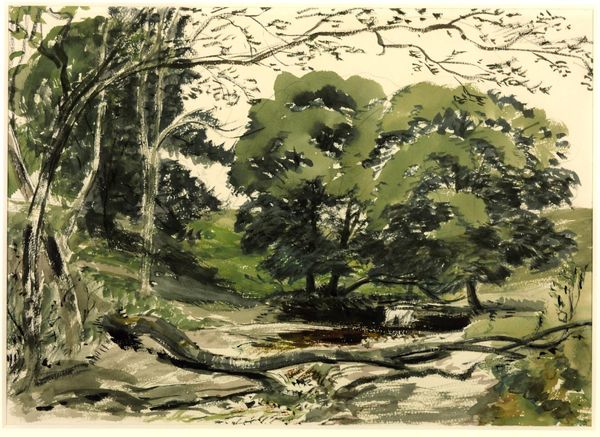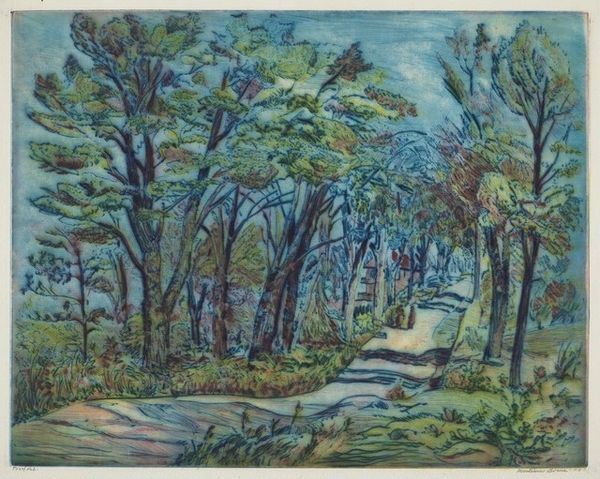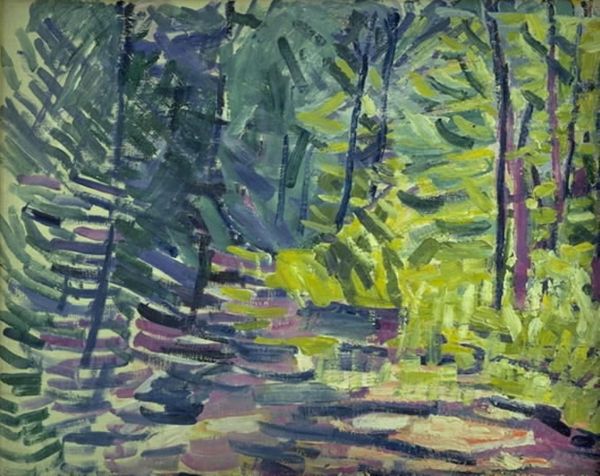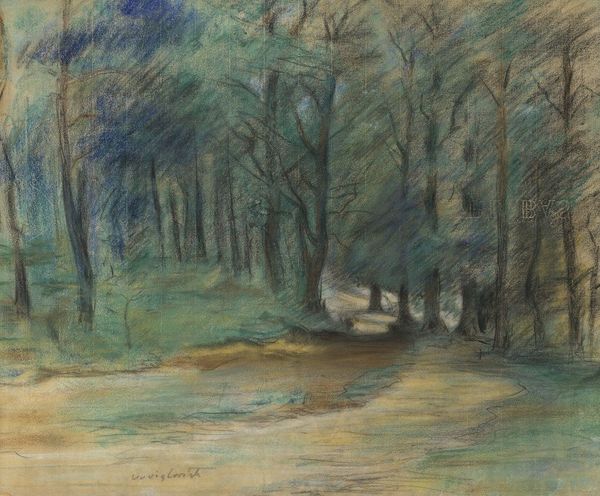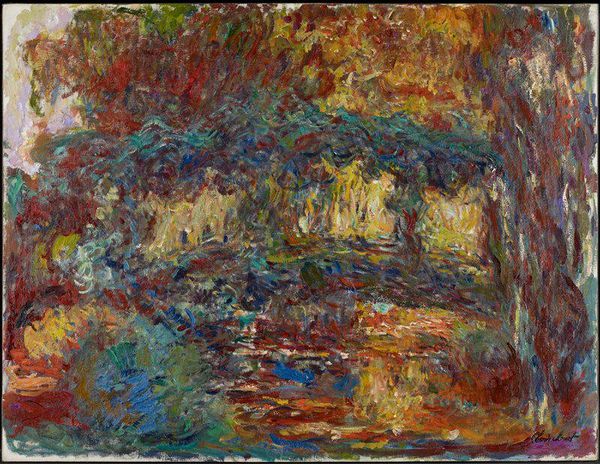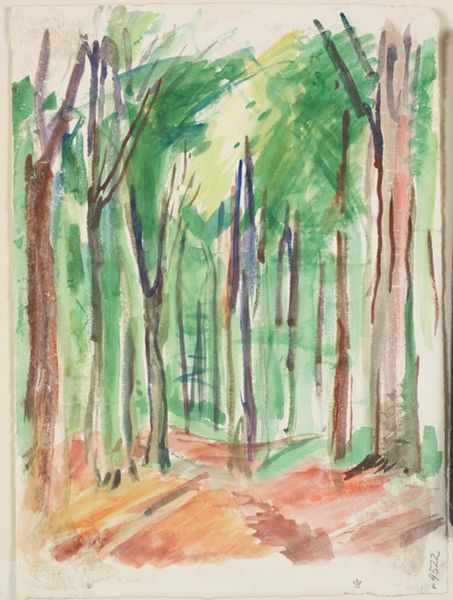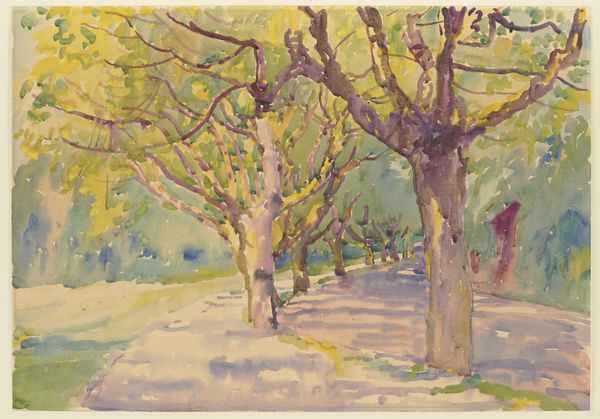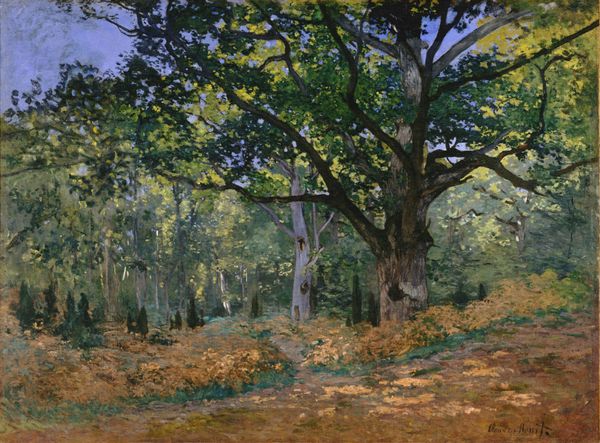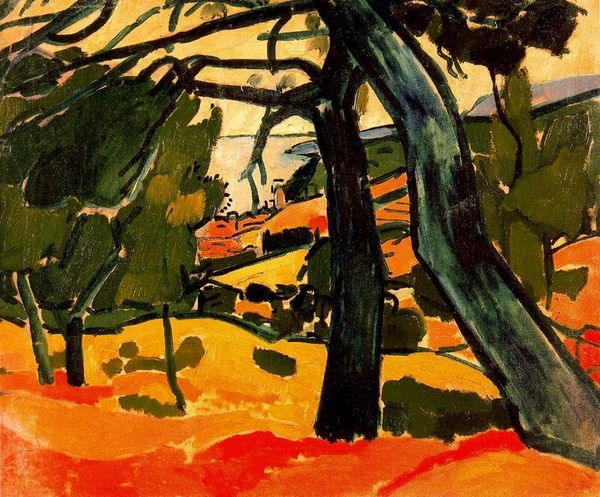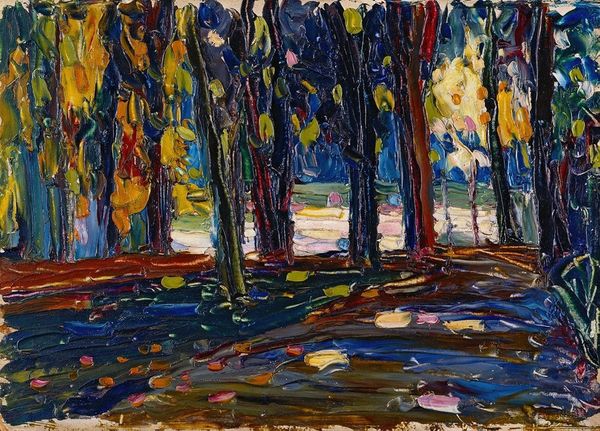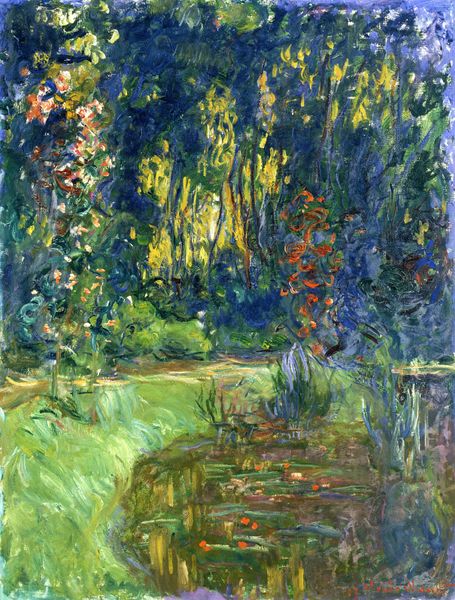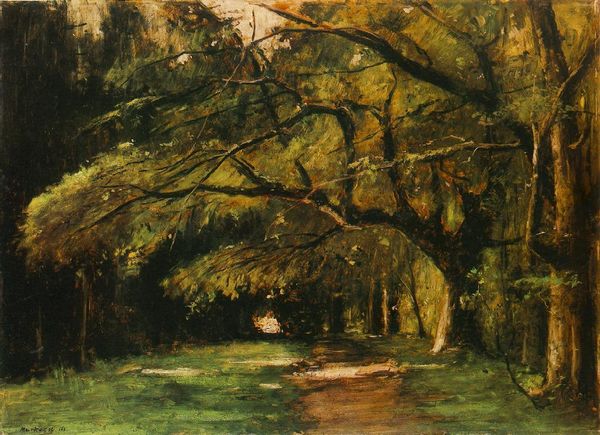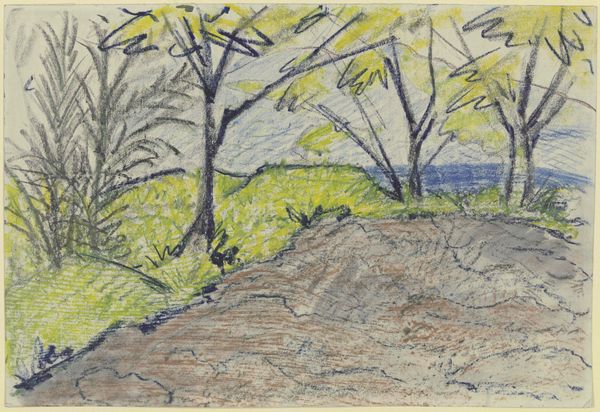
Dimensions: support: 451 x 574 mm
Copyright: © The estate of Sir Jacob Epstein | CC-BY-NC-ND 4.0 DEED, Photo: Tate
Editor: So, this is Sir Jacob Epstein's watercolor, "Epping Forest," located at the Tate. The way the dark trees frame the bright path gives a sense of depth, like you could just walk right into the woods. What historical context should we consider when viewing this work? Curator: Epstein, though known as a sculptor, frequently painted landscapes. Think about the social perception of the forest at the time. Was it a place of leisure, labor, or something more symbolic? Editor: I guess I hadn't considered the different ways people might experience or view a forest. Curator: Exactly. And how did urban expansion influence artists' portrayal of nature? This was made during a time of dramatic change. Editor: That reframes the whole piece. It’s not just a pretty scene; it's a statement. Curator: Precisely. The painting becomes part of a larger cultural discussion.
Comments
Join the conversation
Join millions of artists and users on Artera today and experience the ultimate creative platform.
tate 8 months ago
⋮
Epstein returned to flower and landscape painting frequently during the 1930s. According to his autobiography, 'Let There Be Sculpture', during the summer of 1933 he painted nearly a hundred water-colours of Epping Forest, where he rented a cottage. 'I could go there with my daughter and we did not have to walk far before seeing something worth painting. As usual with me, what started as a mere diversion became in the end a passion, and I could think of nothing else but painting. I arose to paint and painted until sundown ...' Gallery label, August 2004
